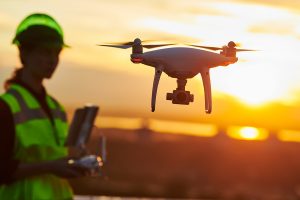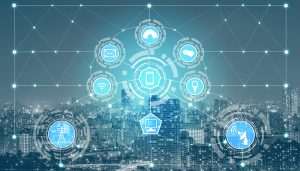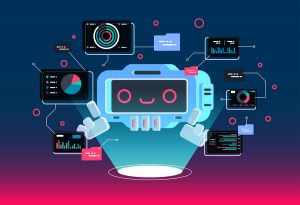 This spring, the concept of supply chains became a household discussion as families searched high and low for household staples like toilet paper, flour, and hand soap. However, supply chain for government is more complex than the supply and demand driven model for consumer goods. Government supply chains involve monitoring for security and foreign involvement. This means knowing where all parts of a solution were manufactured, programmed, and assembled.
This spring, the concept of supply chains became a household discussion as families searched high and low for household staples like toilet paper, flour, and hand soap. However, supply chain for government is more complex than the supply and demand driven model for consumer goods. Government supply chains involve monitoring for security and foreign involvement. This means knowing where all parts of a solution were manufactured, programmed, and assembled.
Gregory C. Wilshusen, director of information security issues at the U.S. Government Accountability Office, noted that "supply chains can be long, complex, and globally distributed and can consist of multiple outsourcing tiers. As a result, agencies may have little visibility into, understanding of, or control over how the technology that they acquire is developed, integrated, and deployed."
This lack of visibility is due in part to incomplete vendor reporting. Not only do vendors have to manage all the pieces of their solution, but they themselves may be managed by multiple organizations in an agency. Reporting happens through numerous tools and is siloed, making it difficult to get a full picture of the chain that led to the delivery of a solution to a government agency.


 From
From  It is called the Internet of Things (IoT) - plural - for a reason. IoT encompasses everything from traditional IT devices like laptops and phones to next-generation technologies like virtual assistants (Alexa, Google Home) to previously unconnected technologies like TVs to everyday utilities like HVAC systems and even refrigerators. With this wide range of things, agencies are finding it difficult to catalog every IoT device, making the creation of policies and processes even more challenging.
It is called the Internet of Things (IoT) - plural - for a reason. IoT encompasses everything from traditional IT devices like laptops and phones to next-generation technologies like virtual assistants (Alexa, Google Home) to previously unconnected technologies like TVs to everyday utilities like HVAC systems and even refrigerators. With this wide range of things, agencies are finding it difficult to catalog every IoT device, making the creation of policies and processes even more challenging. The Internet of Things (IoT) is made up of webcams, sensors, thermostats, microphones, speakers, cars, and even stuffed animals. All of these connected devices can help individuals and organizations stay connected across geographic distances, keeping tabs on and managing assets from miles away. The data they collect can be combined with other data sets to create actionable advice for better management and service.
The Internet of Things (IoT) is made up of webcams, sensors, thermostats, microphones, speakers, cars, and even stuffed animals. All of these connected devices can help individuals and organizations stay connected across geographic distances, keeping tabs on and managing assets from miles away. The data they collect can be combined with other data sets to create actionable advice for better management and service. Citizen Experience is a focus of the
Citizen Experience is a focus of the 
